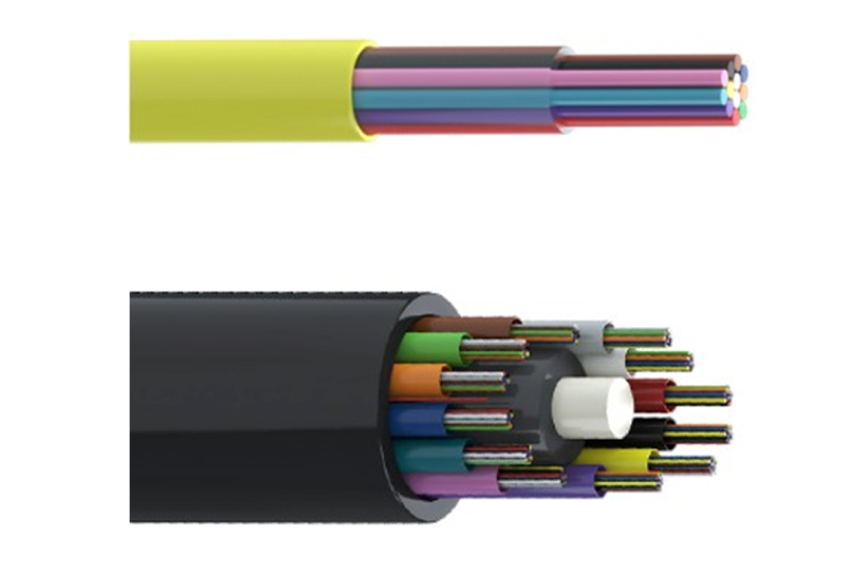
Key Products
ABC and ABFU for Air Blown Installation Page
ABC and ABFU for Air Blown Installation
ABC (Air Blown Cable) and ABFU (Air Blown Fiber Unit) are technologies primarily used for building fiber optic networks, where lightweight cables or fiber units are installed inside ducts or pipes by blowing them with air. This method allows faster and more flexible cable installations compared to traditional methods, and is particularly effective for long distances and complex routes.

ABC (Air Blown Cable)
ABC refers to Air Blown Cable, where the entire fiber optic cable is blown into ducts or conduits using air.
The cable itself is robustly constructed, allowing it to be installed over long distances with air pressure, even in routes with multiple bends or curves.
- Structure & Applications
- Advantages

-
01
Structure
ABC is composed of multiple optical fibers enclosed in a durable outer layer, providing resistance to physical impact, temperature changes, and humidity.
-
02
Applications
It is mainly used in large-scale networks such as urban infrastructure, long-distance communication networks, and data centers. When existing ducts are available, cables can be added without significant construction work, offering convenience and flexibility.

-
01
Long-Distance Installation
With air-blowing technology, cables can be installed over several kilometers, reducing the physical burden of installation.
-
02
Flexibility
New cables can be easily added to existing duct systems, saving time and costs.
-
03
Scalability
As network demands grow, additional cables can be easily installed by blowing them into existing ducts.
ABFU (Air Blown Fiber Unit)
ABFU refers to Air Blown Fiber Units, where small bundles of optical fibers (fiber units) are blown into ducts using air instead of installing a full cable.
These fiber units are lighter and smaller, providing greater flexibility in installation and allowing multiple units to be installed in different ducts as needed.
- Structure & Applications
- Advantages

-
01
Structure
ABFU typically consists of small units with 2 to 12 optical fibers. Unlike full cables, these smaller units can be installed in narrower pipes or ducts, and the installation process is faster and simpler.
-
02
Applications
ABFU is widely used in small-scale building connections or network expansion in urban areas. It’s particularly useful in densely populated areas where space is limited, and in locations where frequent network upgrades or expansions are necessary.

-
01
Flexibility and Scalability
Fiber units can be installed as needed, optimizing the use of duct space.
-
02
Adaptability to Complex Routes
Smaller ducts and tight spaces can be easily navigated using ABFU, making it suitable for complex installation environments.
-
03
Cost Efficiency
Initial installations can be minimized, with the flexibility to add more fibers later, reducing upfront costs.
Comparison Between ABC and ABFU
ABC and ABFU for air blown installation significantly improve the efficiency of network deployment. Each has distinct advantages depending on the scale and environment of the network, from large-scale communication networks to smaller local networks.
The air blown installation method reduces physical labor, provides flexible scalability, and saves costs, making it a key technology for building network infrastructure.

-
01
Cable Size
ABC involves installing the entire fiber optic cable, requiring larger ducts, while ABFU allows smaller fiber units to be blown into ducts, enabling the use of smaller ducts.
-
02
Flexibility
ABFU is more flexible and suitable for phased expansions, allowing fibers to be installed incrementally, whereas ABC typically involves installing entire cables at once, making it better suited for large-scale deployments.
-
03
Application Environments
ABC is ideal for large infrastructure and long-distance networks, while ABFU is better suited for smaller-scale networks or tight urban environments.
